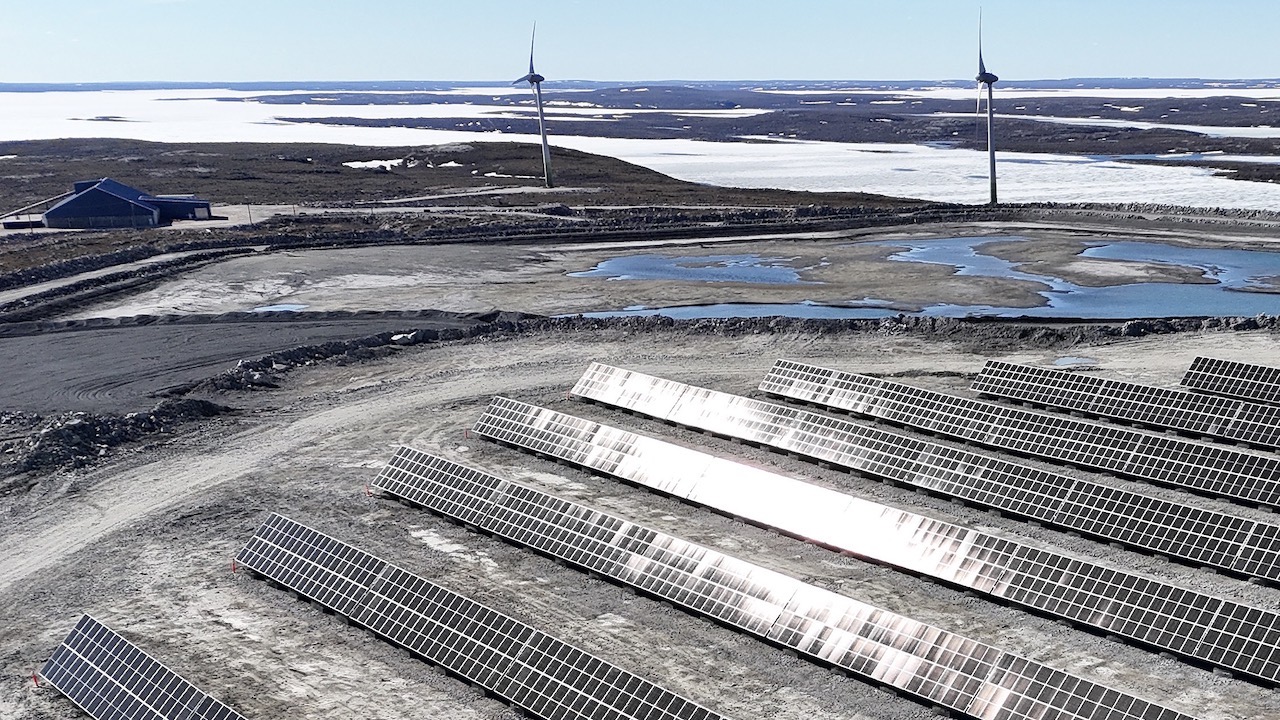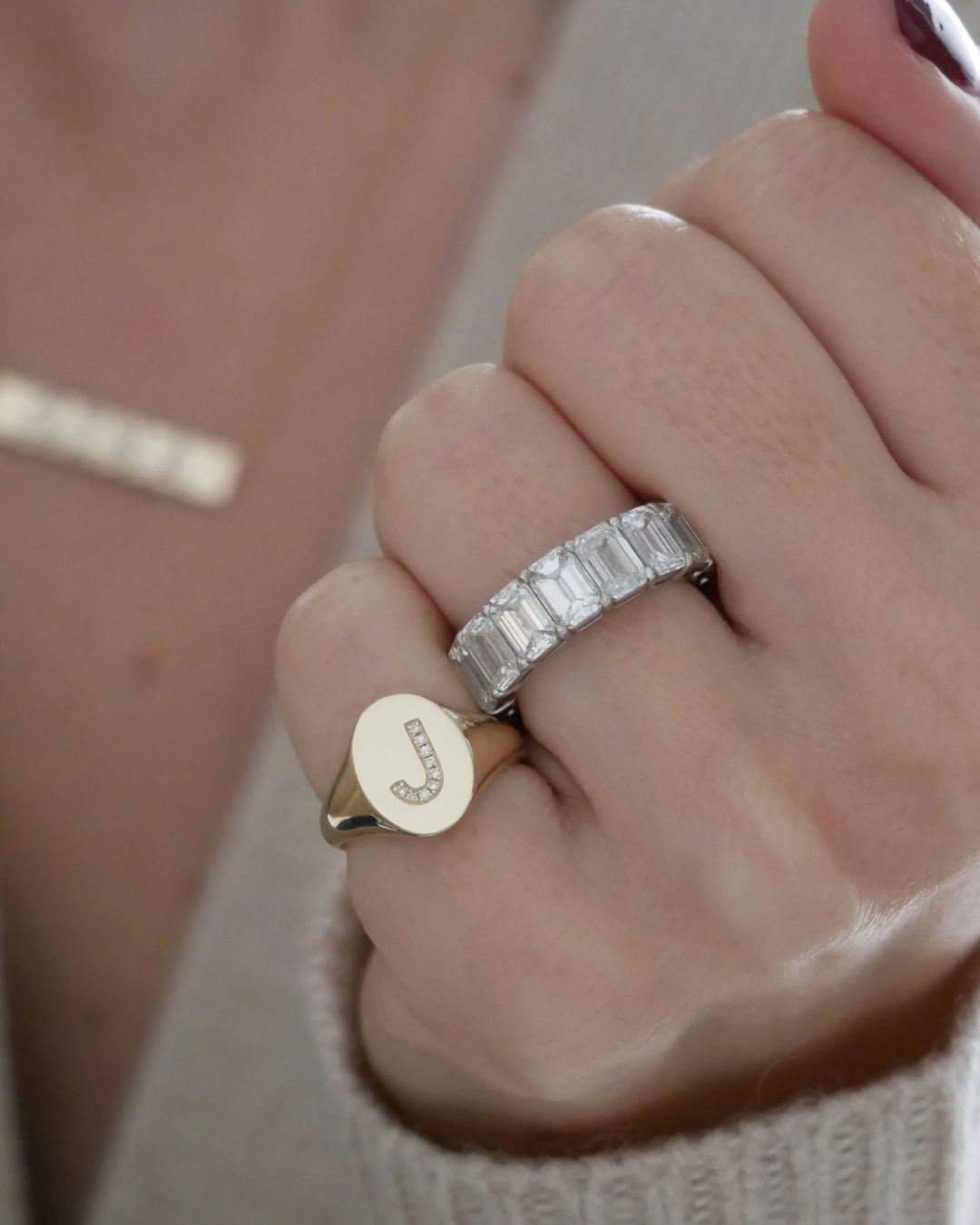Responsibility
How Rio Tinto’s Diavik Diamond Mine Champions Renewable Energy
By Raluca Anghel, June 6, 2025
How a remote arctic diamond mine became a beacon for renewable innovation.

Solar panel farm at Rio Tinto’s Diavik Mine in the Northwest Territories. (Courtesy of Rio Tinto)
Canadian diamonds are among the world’s most sought-after gems. Yet there is much history within the sparkles. As of 2024, all of Canada’s diamonds are recovered from its far North, in the sub-Arctic region known as the Northwest Territories (NWT). Called Denendeh, or “Land of the People” in the Dene languages, the NWT is home to Canada’s three active diamond mines, including Rio Tinto’s Diavik Diamond Mine.
Meet the Experts

Paul Gruner is CEO of the Tłı̨chǫ Investment Corporation, an Indigenous-owned organization focused on sustainable economic development in Canada’s North.
Led community partnership efforts with Solvest Inc. to support the groundbreaking solar energy system at the Diavik Diamond Mine.

Matt Breen is Chief Operating Officer of Diavik Diamond Mine.A seasoned mining executive with over 20 years of global experience, Breen is spearheading Diavik’s transition to renewable energy, including Canada’s largest off-grid solar installation.
Diamonds That Love a Challenge

In this extraordinary region, you’ll experience the striking contrasts of the sub-Arctic’s raw and rugged beauty. During the long winter months, daylight is fleeting, with only a few hours of sun each day, while in summer, the sun barely sets, casting its golden light for more than 20 hours at a time.
Some of the oldest diamonds ever formed are discovered at Rio Tinto’s Diavik Diamond Mine. In just over two decades since mining began, Diavik diamonds have become known not only for their beauty, but also for the remarkable stories behind them. Recovered from beneath a frozen lake in Canada’s remote Northwest Territories, these diamonds have helped demonstrate that groundbreaking innovation, including the use of renewable energy, is possible even in the harshest, coldest climates.

Rio Tinto introduced renewable energy to the world of sub-Arctic diamond mining by establishing an award-winning wind farm at its Diavik mine site. Towering above the tundra, four wind turbines have stood as a symbol of innovation since 2012, offsetting the equivalent of 135,000 tons of CO₂ emissions and proving that sustainability is possible, even in one of the world’s most remote and extreme climates.
Solar and Snow Power at Diavik Diamond Mine
Further cementing its reputation as a pioneer in renewable energy, one of Diavik’s most ambitious recent initiatives is its newly completed solar power plant—now one of the largest off-grid solar installations in Canada’s North. In 2024, the mine installed a 6,600-panel solar facility spanning an impressive 70,000 square meters. For perspective, that’s roughly the size of Buckingham Palace—an extraordinary scale for a project operating in such a remote and challenging environment.
Matt Breen, chief operating officer of Diavik, says, “Together with our 9.6 MW wind farm, the largest off-grid solar power plant in Canada’s North, shows our commitment to the environment in which we live and work, and will continue to improve the energy efficiency of our operations at Diavik. As a result, during closure of the mine, renewable energy will make up approximately 25% of our power consumption.”
“It sounds like a crazy place to install a massive solar energy system,” says Paul Gruner. He serves as CEO of the Tłı̨chǫ Investment Corporation, an Indigenous-owned company that, in partnership with Whitehorse-based Solvest Inc., played a key role in supporting the solar energy system at the Diavik Diamond Mine. Solvest is a leading renewable energy firm known for its work across the Arctic. “But there are so many benefits to using solar power in our area of the world, both for the environment and for the field of engineering. Setting up a solar operation so far north is an incredible challenge, but the rewards are worth it.”
A Community-Led Vision for Renewable Energy
The project reflects a strong commitment to sustainable development and community collaboration. Notably, approximately 30% of the construction workforce was made up of Tłı̨chǫ Nation community members, highlighting the vital role of local expertise in bringing this groundbreaking initiative to life. “It’s helped change my perception of what renewable energy can be in an extreme environment,” says Gruner. Generally, even in extreme cold temperatures of –40 degrees Celsius, the sun can generate power.
To ensure the solar farm could withstand the Northwest Territories’ winter conditions, engineers anchored the solar panels with steel cages called “gabion baskets,” which are more commonly used to prevent seaside erosion elsewhere on the planet. The cages are weighted down with repurposed crushed rock from mine operations and help protect the 23 rows of solar panels from strong winds
Early data from the new solar installation is promising, generating about 4.5 million kilowatt-hours of energy per year. “That lets us cut about 1.1 million liters of diesel fuel,” says Breen, along with an annual reduction of about 3,100 tons of CO2 emissions – the equivalent of removing 630 cars from the road for a full year.

Harnessing Arctic Conditions at Diavik Diamond Mine
Anyone who has visited the Northwest Territories can attest to its stunning beauty—the endless tundra, dotted with glassy lakes in the summer and blanketed by pristine snow and ice in the winter. While the land may appear vast and empty, it’s teeming with life. From bison and muskox to bears, caribou, and wolves, the region’s wilderness and coastlines are home to an extraordinary range of wildlife.
But this land holds far more than natural splendor—it is also sacred ground. Indigenous peoples have called the Northwest Territories home for thousands of years, and any industrial activity, especially diamond mining, must respect and preserve traditional ways of life and historic hunting areas. That’s why innovation in low-carbon technologies isn’t just about reducing environmental impact—it’s about upholding responsibility to the communities that have always stewarded this land. “This is one of the most beautiful places in the world,” says Gruner, and the incredible amount of snow in the region turns out to have a hidden advantage.
Diavik’s solar power project took this into account and installed bifacial, or double-sided, solar panels. These cutting-edge panels are designed to absorb energy not just from the sun above, but also from the light reflected off the snow below. It’s a smart adaptation to a challenging environment that essentially turns the snowy ground into an extra power source. This design delivers real results. The bifacial panels give the mine up to 10% more solar power output per day, and thanks to the cold climate, performance only improves. At -25°C, the panels generate 15% more energy than they would at a balmy +25°C, proving once again that Diavik is not only mining in the North, it’s innovating for it.
What Happens Next for the Diavik Diamond Mine

Diavik Diamond Mine is due to close in 2026. “We are committed to closing responsibly and closing with care,” says Breen. As part of that commitment, engineers have designed Diavik’s solar plant to be completely dismantled, relocated, and then reassembled at a new site, so the benefits of Arctic solar power can continue well after the mine itself has closed.
“This is also important to the Indigenous communities who have made a commitment to support the closure of Diavik, with a lot of care and effort,” says Gruner. “It’s on Indigenous land. It employs Tlicho community members. We take this very seriously.”
In a landscape defined by extremes, the Diavik Diamond Mine has proven that innovation and sustainability can thrive even under layers of snow and ice. As the mine approaches its closure, its legacy will live on through the remarkable diamonds it brought to light, but also through its bold renewable energy efforts that will carry on beyond the diamond industry.











